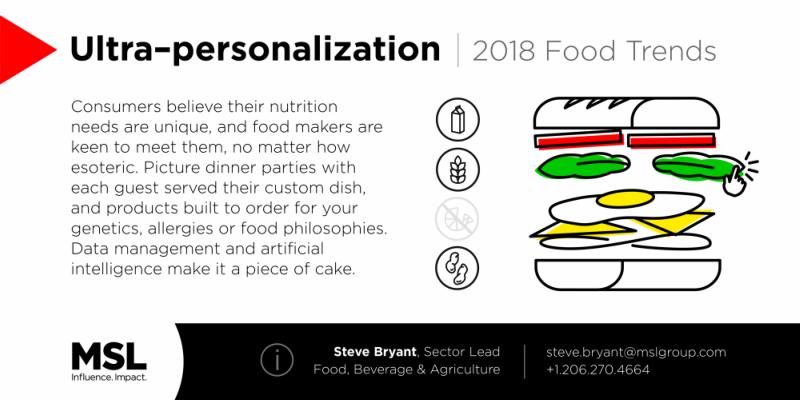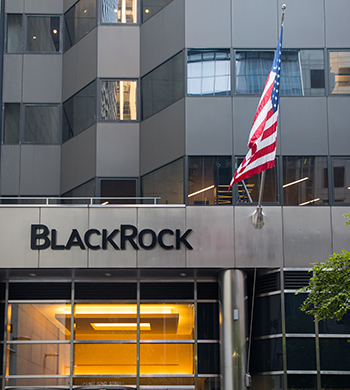MSL 04 Jan 2018 // 5:37PM GMT

We’ve seen some food trends transform the industry, but others have shown to be fads. How can you tell the difference — and how does that impact the way that brands/marketers should respond?
We craft our forecast principally in the interest of food marketers and communicators. We want to inform, inspire and support their brand storytelling, and we believe all of these themes will strongly motivate food and beverage conversations and consumption in 2017.
We expect these trends to drive substantial economic value for the industry. Businesses stand to benefit by aligning their brands, offers and stories with these powerful ideas.
As you might surmise, the trends are more evident in the premium end of the food market. And that’s where most food makers and sellers are aiming their innovations, and for a very good reason: the premium segment is growing three times as fast as the market as a whole.
When it comes to clean packaging, are consumers looking for a ‘clean looking’ packaging — or are they expecting brands to take action on this? For instance, minimal packaging to be eco-friendly or using less plastics for a ‘cleaner’ package, etc?
All of that, in fact, but certainly we see this movement led by clean visual design. In a crisis of trust over packaged food, consumers became self-defensive label readers, driving the “clean label” movement. Now, brands are designing their packaging to express this inner, “clean” ethos visually. They literally put an innocent new face forward. Simple and uncluttered, aiming to signal trustworthiness.
Ecologically sounds packaging is also coming on, but most consumers still consider it nice, not essential.
There was a backlash against single-serve items (from an eco perspective) a few years ago? Has that moment passed in favor of convenience?
Convenience is winning, certainly, but green convenience will continue to find an edge in the market. Consumers may choose convenient, single-serve items to meet their lifestyle demands, while still aspiring to reduce their environmental impact.
The most fad-like trend seemed to be plant milks and the plant butcher. Do you see this as having staying power — or more reflective of a moment?
These are both just offshoots of the very well-established plant foods movement. They also have the potential for broad appeal for mass consumers because they deliver plant foods that are somewhat analogous to meat or dairy foods.
Plant milks, including nut milks, are already a multi-billion dollar market, with room to grow. More sources and varieties are yet to come. In addition, cultured plant milks, such as yogurt, are getting better, and finding fans.
When it comes to plant butchery, that’s both a valuable service and a fulfilling experience for the shopper. Curiously, it brings some of the ritual of hunting and dressing meats into the produce aisles. Any way you cut it, plant butchery is likely to turn the heads of even meat lovers.
It’s interesting that you called out both instant gratification and personalization as trends. How do you see these two things playing out simultaneously?
Both of these trends are chasing a millennial consumer who wants it now, and who wants it tailored to their personal needs. Ever more instant gratification is the promise of delivery, and why would consumer say no when the cost of delivery is, at least for now, fairly modest.
Personalization is rising because consumers increasingly believe they are a unique person with unique dietary needs. Most will meet those needs with selective shopping. They will be watching for key works and icons on packaging, selecting for the products that are tailored to their personal criteria. For the most part, consumers are managing this personalization process, relying on transparent and trustworthy brands to declare their relevance to their unique needs.
Artisanal dairy, plant milks and some of the instant gratification trends seem to be rooted in urban centers. Do you expect these will be picked up by more suburban consumers and beyond? How much do you think some of these trends will remain segmented by certain demographics — political persuasion, geography, social cause support, income level, etc.
I would expect the usual dissemination patterns. Trends normally start in educated urban centers. As they diffuse, they also tend to be diluted. Surely, income will be a factor, and some consumers will be priced out of these innovations and their benefits.
Retail experimentation — does this also include things like Barnes & Noble becoming a cafe or Whole Foods adding bars and restaurants to its stores? Are other food retailers looking to create experiential moments like that?
Those are all good examples. Outside of discount retail, every significant player is going beyond merchandising to deliver food experience as well as a broadening array of foodservice. They fear it’s innovate or die, especially after Amazon’s newly acquired Whole Foods 365 very quickly became the e-tailer’s second-biggest private label brand.
Let’s revisit some of the trends from 2017 — we talked about smart labels in 2017. There seem to be more apps designed to detect certain ingredients. Are we headed towards mass adoption?
Wouldn’t that be nice? Frankly, it’s hard to see anyone approach achieving dominance. What’s certain is that consumers are shopping with one hand and wielding a smartphone in the other, accessing many different channels to inform their purchase. In this way, we’re “online” even when we’re shopping “in-store.”
When we spoke last year, we talked about how social media had become showroom for food — but this year, my feed has leaned more towards politics and social movements. Do you think food has been pushed aside — or is now, at the very least, sharing the stage with some of the bigger movements in the country right now?
That’s certainly true on Facebook. Naturally, when they share political views on Facebook, that’s exactly what comes back at them. In other channels, such as Instagram, food and drink are still going strong, an enticing retreat from political strife.
51fe924a918367d3ac1bff0000c9ebb1.png)
Steve Bryant, Managing Director, MSL Seattle discusses food trends forecast with The Holmes Report
View MSL 2018 Food Trends press release here


































.jpg)















